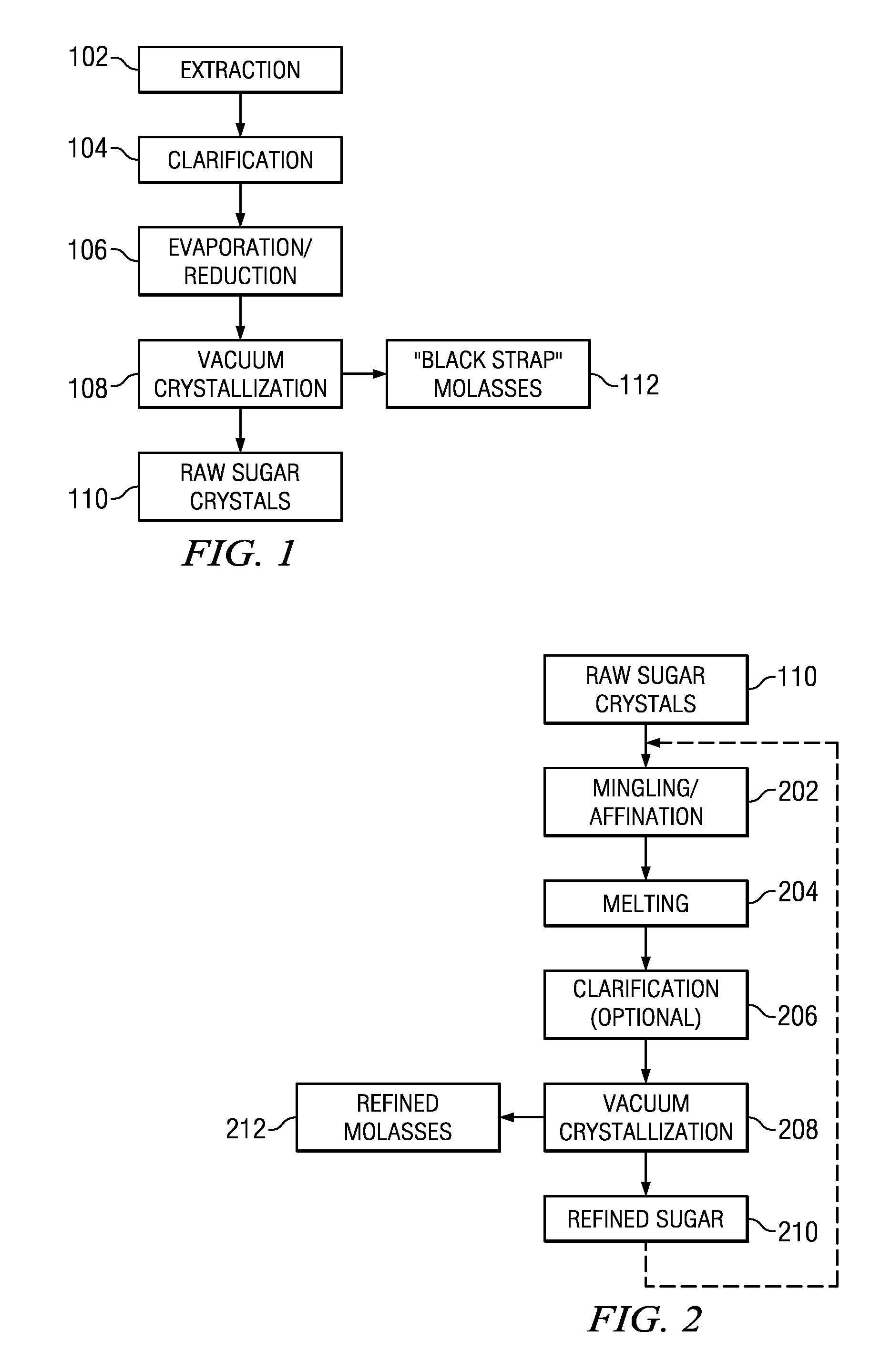Method for reducing acrylamide formation in molasses post-production
a technology of molasses and acrylamide, applied in the field of methods, can solve the problems of undesirable presence of acrylamide in food products, especially at elevated levels, and achieve the effect of reducing the formation of acrylamid
- Summary
- Abstract
- Description
- Claims
- Application Information
AI Technical Summary
Benefits of technology
Problems solved by technology
Method used
Image
Examples
Embodiment Construction
[0015]It is presently believed that acrylamide is formed from the presence of amino acids and reducing sugars. For example, it is believed that a reaction between free asparagine, an amino acid commonly found in raw vegetables, and free reducing sugars accounts for the majority of acrylamide found in fried food products.
[0016]The formation of acrylamide from amino acids other than asparagine is possible, but it has not yet been confirmed to any degree of certainty. For example, some acrylamide formation has been reported from testing glutamine, methionine, cysteine, and aspartic acid as precursors. These findings are difficult to confirm, however, due to potential asparagine impurities in stock amino acids. Nonetheless, asparagine has been identified as the amino acid precursor most responsible for the formation of acrylamide.
[0017]Since acrylamide in foods is a recently discovered phenomenon, its exact mechanism of formation has not been confirmed. However, it is now believed that ...
PUM
| Property | Measurement | Unit |
|---|---|---|
| temperature | aaaaa | aaaaa |
| boiling point | aaaaa | aaaaa |
| melting point | aaaaa | aaaaa |
Abstract
Description
Claims
Application Information
 Login to View More
Login to View More - R&D
- Intellectual Property
- Life Sciences
- Materials
- Tech Scout
- Unparalleled Data Quality
- Higher Quality Content
- 60% Fewer Hallucinations
Browse by: Latest US Patents, China's latest patents, Technical Efficacy Thesaurus, Application Domain, Technology Topic, Popular Technical Reports.
© 2025 PatSnap. All rights reserved.Legal|Privacy policy|Modern Slavery Act Transparency Statement|Sitemap|About US| Contact US: help@patsnap.com

